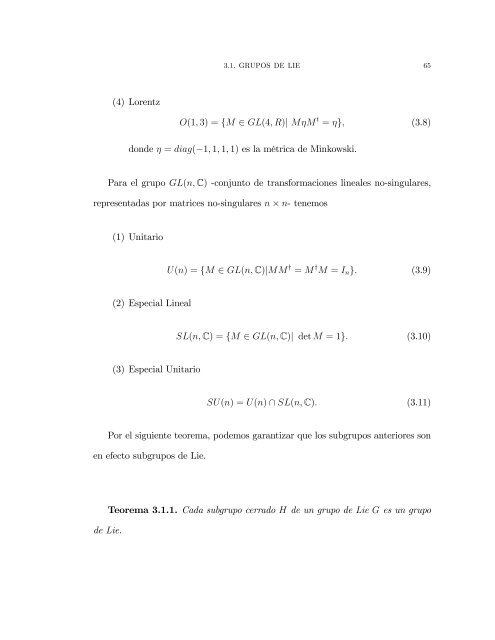INSTITUTO POLITÃCNICO NACIONAL - Instituto Avanzado de ...
INSTITUTO POLITÃCNICO NACIONAL - Instituto Avanzado de ...
INSTITUTO POLITÃCNICO NACIONAL - Instituto Avanzado de ...
Create successful ePaper yourself
Turn your PDF publications into a flip-book with our unique Google optimized e-Paper software.
3.1. GRUPOS DE LIE 65(4) LorentzO(1; 3) = fM 2 GL(4; R)j MM t = g; (3.8)don<strong>de</strong> = diag(1; 1; 1; 1) es la métrica <strong>de</strong> Minkowski.Para el grupo GL(n; C) -conjunto <strong>de</strong> transformaciones lineales no-singulares,representadas por matrices no-singulares n n- tenemos(1) UnitarioU(n) = fM 2 GL(n; C)jMM y = M y M = I n g: (3.9)(2) Especial LinealSL(n; C) = fM 2 GL(n; C)j <strong>de</strong>t M = 1g: (3.10)(3) Especial UnitarioSU(n) = U(n) \ SL(n; C): (3.11)Por el siguiente teorema, po<strong>de</strong>mos garantizar que los subgrupos anteriores sonen efecto subgrupos <strong>de</strong> Lie.<strong>de</strong> Lie.Teorema 3.1.1. Cada subgrupo cerrado H <strong>de</strong> un grupo <strong>de</strong> Lie G es un grupo
















